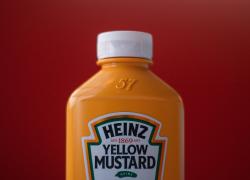
AUA 2025 – Pfizer catches the Crest of a subQ wave
But sasanlimab's use looks set to remain narrow.
But sasanlimab's use looks set to remain narrow.

With subcutaneous delivery of anti-PD-(L)1 drugs firmly on the agenda, and a dispute between Merck & Co and Halozyme over SC Keytruda hotting up, this field could soon see a new entrant: Pfizer's sasanlimab, whose registrational Crest study was unveiled on Saturday at the American Urological Association meeting.
With some caveats, Crest should support sasanlimab's first approval in non-muscle invasive bladder cancer (NMIBC). However, unlike competitors sasanlimab isn't a reformulation and doesn't use an adjuvant like hyaluronidase, having been "specifically designed to be a companion to BCG in NMIBC", Dana Kennedy, Pfizer's head of genitourinary cancers development, told ApexOnco ahead of AUA.
This has one major implication, namely that sasanlimab's use will likely be restricted to bladder cancer; though Kennedy says Pfizer is investigating other indications, Crest is the project's only company-sponsored pivotal trial.
In contrast, Roche's Tecentriq Hybreza and Bristol Myers Squibb's Opdivo Qvantig are approved across all the IV forms' solid tumour indications, and Merck's SC Keytruda could follow suit as it faces a 23 September PDUFA date. Still, Kennedy dismisses these IV-to-SC "adapted formulations", saying they don't share sasanlimab's ease of administration, and come with more injection site pain and reactions.
No displacing BCG
Not only will sasanlimab's use remain limited, even in NMIBC the drug won't, on the current data, help replace BCG (Bacillus Calmette Guérin), which remains the mainstay of first-line NMIBC treatment despite being inconvenient and plagued with shortage problems.
Pfizer toplined Crest, a study in BCG-naive NMIBC, as positive for its primary endpoint of event-free survival in January, and AUA has backed this with statistically significant numbers amounting to a 32% reduction in disease recurrence or death versus BCG.
However, this only goes for sasanlimab combined with BCG induction as well as maintenance. Crest also included a cohort where patients got sasanlimab plus BCG induction only, but this was no better on EFS than BCG induction and maintenance alone.
Perhaps surprisingly, Pfizer said this result underscored the need for BCG maintenance as a standard treatment. The company might have argued that being no worse than BCG induction and maintenance was enough of a win for sasanlimab, if a combo limited BCG to the induction phase only.
However, Kennedy said Crest hadn't been designed to demonstrate non-inferiority. But the result is decent considering that BCG alone appeared to have outperformed historical numbers; 24-month EFS rate for this control was expected to amount to 50-70%, she said, but in fact came in at nearly 80%.
She also pointed to impressive complete response results in NMIBC patients with carcinoma in situ, which has a relatively poor prognosis, conceding that the CR rate was in fact numerically better for sasanlimab whether combined with BCG induction and maintenance or for induction alone. Notable, however, was sasanlimab's 20-30% rate of severe treatment-related adverse events.
Crest data summary
Sasanlimab + BCG i + BCG m | Sasanlimab + BCG i | BCG i + BCG m (control) | |
|---|---|---|---|
| 36-mth EFS rate | 82% | 72% | 75% |
| Stats for EFS | HR=0.68 (p=0.019) vs control | HR=1.16 (p=0.312) vs control | |
| 36-mth CR rate in CIS* | 92% | 77% | 68% |
| Grade ≥3 TRAE | 29% | 22% | 6% |
Note: *CIS=carcinoma in situ; i=induction; m=maintenance. Source: AUA & Pfizer.
Either way, whatever opportunity exists for sasanlimab to replace BCG in high-risk NMIBC, Pfizer isn't seizing it. This contrasts with Johnson & Johnson, whose Sunrise-3 trial in BCG-naive patients pits TAR-200 versus BCG. UroGen faces a 13 June PDUFA date for UGN-102 monotherapy in BCG-naive disease, but this relates to a different setting of low-grade intermediate-risk NMIBC.
The AUA data also confirmed that Crest showed no overall survival benefit, but death in this relatively early setting is uncommon, and with most deaths so far being unrelated to disease progression the OS data are expected to show no difference even at final analysis, Kennedy said. The much more relevant benefit is avoiding disease recurrence, and thus staving off bladder removal.
Though NMIBC is becoming competitive, most of sasanlimab's rivals, including Merck & Co's Keytruda, are approved in patients unresponsive to BCG, rather than BCG-naives. Though Pfizer is still cagey about its interactions with the FDA it says the Crest data have been shared with regulators, so a BLA filing might have been submitted and not yet accepted.
As for sasanlimab's design specifically for NMIBC, Kennedy says SC delivery is important given that urologist offices aren't typically equipped to deliver IV infusions. The project represents Pfizer's second shot at PD-1, after a 2014 deal covering Merck KGaA's Bavencio was unwound two years ago.
Interestingly, Bavencio is approved for first-line urothelial bladder cancer maintenance, but it clearly didn't cut it for Pfizer. Instead, the group's broader effort with this mechanism rests on ivonescimab – Kennedy says she is "very excited" about Pfizer's recent clinical trial collaboration with Summit – and on the Seagen-derived anti-PD-L1 ADC PF-08046054.
208













